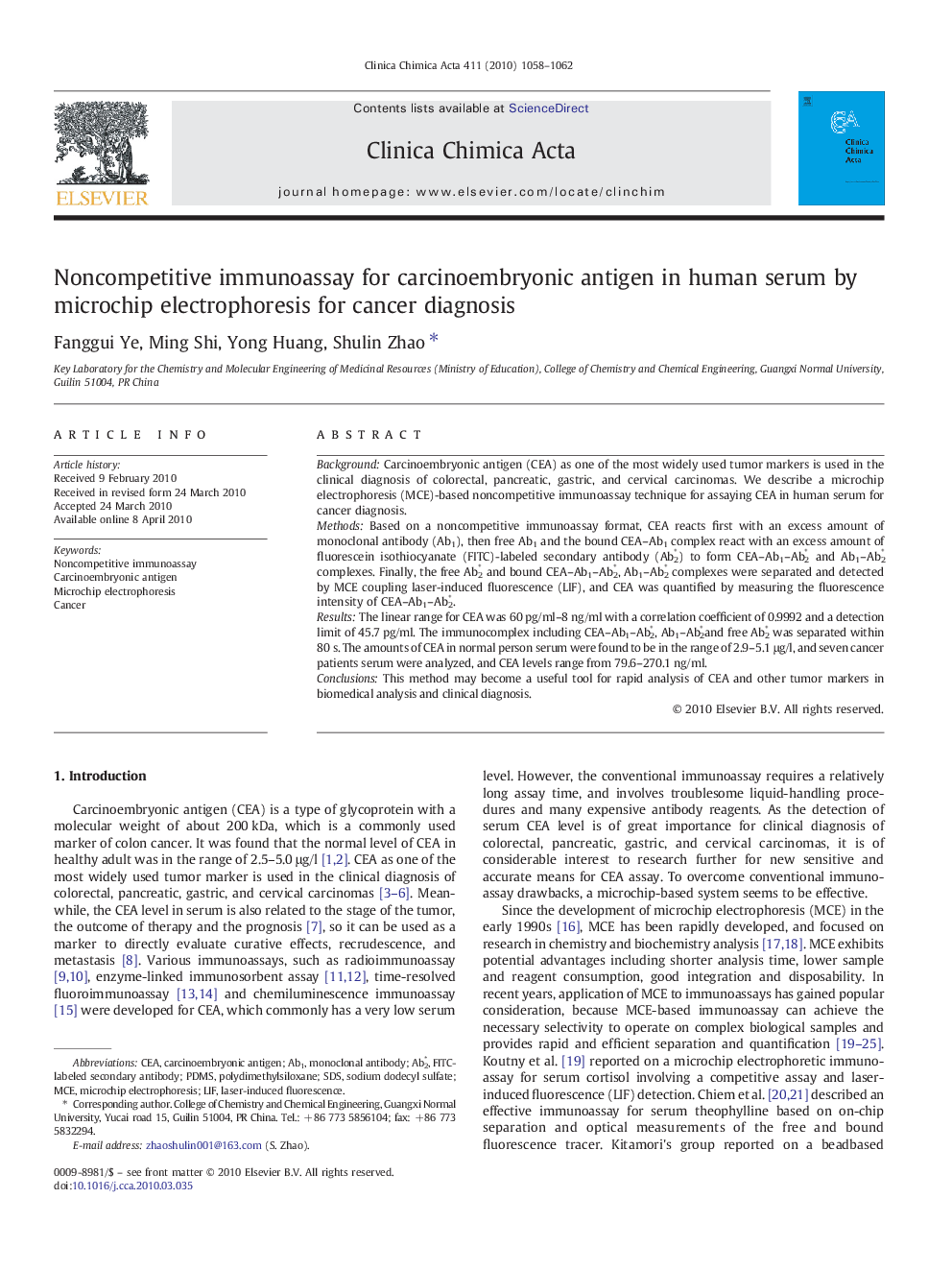| Article ID | Journal | Published Year | Pages | File Type |
|---|---|---|---|---|
| 1965844 | Clinica Chimica Acta | 2010 | 5 Pages |
BackgroundCarcinoembryonic antigen (CEA) as one of the most widely used tumor markers is used in the clinical diagnosis of colorectal, pancreatic, gastric, and cervical carcinomas. We describe a microchip electrophoresis (MCE)-based noncompetitive immunoassay technique for assaying CEA in human serum for cancer diagnosis.MethodsBased on a noncompetitive immunoassay format, CEA reacts first with an excess amount of monoclonal antibody (Ab1), then free Ab1 and the bound CEA–Ab1 complex react with an excess amount of fluorescein isothiocyanate (FITC)-labeled secondary antibody (Ab2*) to form CEA–Ab1–Ab2* and Ab1–Ab2* complexes. Finally, the free Ab2* and bound CEA–Ab1–Ab2*, Ab1–Ab2* complexes were separated and detected by MCE coupling laser-induced fluorescence (LIF), and CEA was quantified by measuring the fluorescence intensity of CEA–Ab1–Ab2*.ResultsThe linear range for CEA was 60 pg/ml–8 ng/ml with a correlation coefficient of 0.9992 and a detection limit of 45.7 pg/ml. The immunocomplex including CEA–Ab1–Ab2*, Ab1–Ab2*and free Ab2* was separated within 80 s. The amounts of CEA in normal person serum were found to be in the range of 2.9–5.1 μg/l, and seven cancer patients serum were analyzed, and CEA levels range from 79.6–270.1 ng/ml.ConclusionsThis method may become a useful tool for rapid analysis of CEA and other tumor markers in biomedical analysis and clinical diagnosis.
